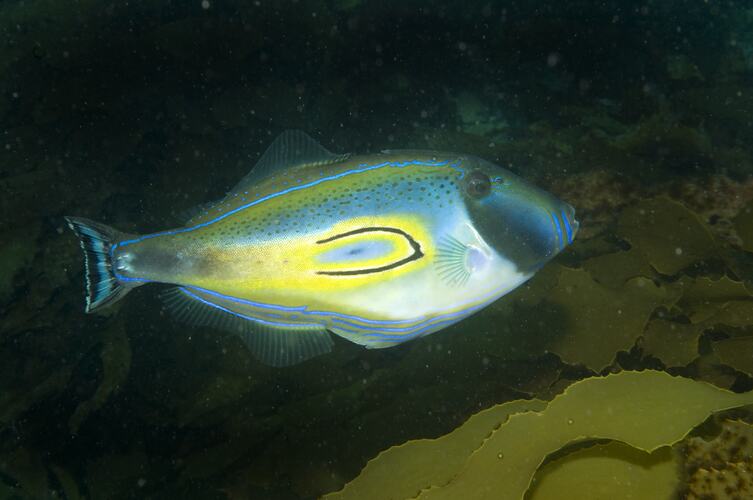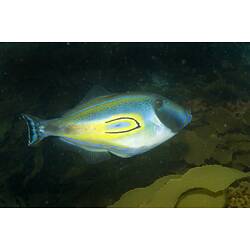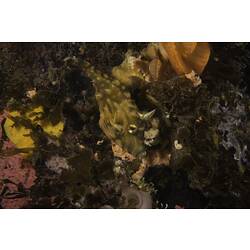General Description
Body elongate, compressed, adults with two pairs of curved spines on each side of tail base. First dorsal-fin spine tall with serrated edges. Greenish to bluish-green with a black horse-shoe mark surrounded by yellow on midsides, and blue lines along dorsal and anal fin bases. Usually 30 cm long head to tail tip (up to 60 cm).
Biology
Easily recognised by the large horse-shoe marking on each side; small juveniles have an elongate bluish-grey marking surrounded by yellow. Common on coastal and deeper estuarine rocky reefs in southern Australia, especially in the southwest. Juveniles often shelter around jetties and piers; adults may occur in large schools in areas with abundant kelp on offshore coastal reefs and in deeper rocky estuaries.
Distribution
Southern Australia.
Habitat
Rocky reefs in shallow coastal waters and bays.
More Information
-
Animal Type
-
Animal SubType
-
Brief Id
Body compressed, 2 pairs of large spines on tail base, dorsal-fin with barbs along sides, "horse-shoe" shaped mark on side.
-
Habitats
-
Diet
Carnivore
-
Diet Categories
Invertebrates
-
Endemicity
-
Commercial
Yes
-
Conservation Statuses
CITES: Not listed, FFG Threatened List: Not listed, EPBC Act 1999: Not listed, IUCN Red List: Least Concern
-
Depths
Shallow (1-30 m)
-
Water Column Locations
On or near seafloor
-
Taxon Name
-
Scientific Author
(Quoy & Gaimard, 1824)
-
Common Name
Horseshoe Leatherjacket
-
Kingdom
-
Phylum
-
Subphylum
-
Superclass
-
Class
-
Order
-
Family
-
Genus
-
Species Name
hippocrepis



